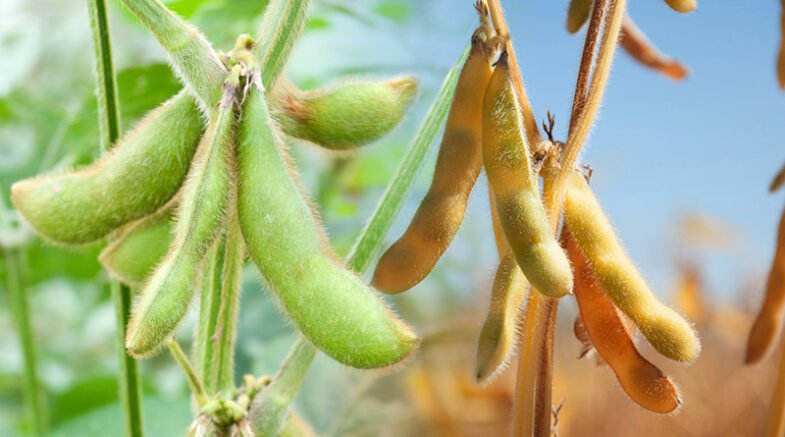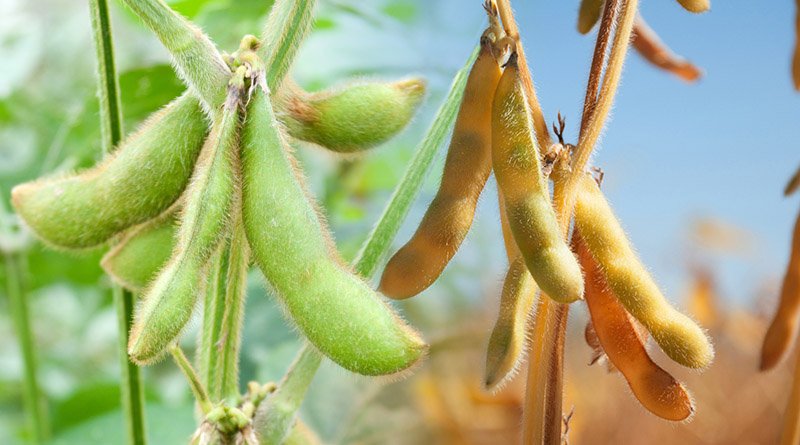Soybeans are one of the most widely cultivated crops globally and are used in various forms, including as animal feed, vegetable oil, and soy protein.

Soybeans are one of the most widely cultivated crops globally and are used in various forms, including as animal feed, vegetable oil, and soy protein.
However, the production of soybeans has been linked to climate change through several mechanisms. In this article, we will explore the ways in which soybean production contributes to climate change.
Deforestation and Land Use Change
The expansion of soybean production has led to the clearing of vast tracts of forests and other natural habitats. This has caused significant greenhouse gas (GHG) emissions through the burning and decomposition of the cleared vegetation, which releases carbon dioxide (CO2) and methane (CH4) into the atmosphere.
Additionally, the cleared land is often replaced with soybean monocultures, which have a much lower carbon sequestration potential than forests, further contributing to GHG emissions.
Fertilizer Use
Soybean production requires large amounts of nitrogen fertilizer. Nitrogen fertilizers are synthesized through a process that requires significant amounts of energy, which is often derived from fossil fuels. Additionally, the application of nitrogen fertilizer can lead to emissions of nitrous oxide (N2O), a potent greenhouse gas that is approximately 300 times more potent than CO2.
Transportation and Processing
After soybeans, one of the most widely cultivated crops, are harvested, they are transported to processing facilities, where they are turned into various products, including soybean oil and soy protein. This transportation and processing require energy, which is often derived from fossil fuels, leading to additional GHG emissions.
Animal Agriculture
Soybeans are a common ingredient in animal feed, particularly for livestock such as pigs and chickens. The production of these animals also contributes to climate change through emissions of GHGs such as CH4 and N2O. Additionally, the production of animal products is typically more resource-intensive and emits more GHGs per unit of protein than plant-based products.
To mitigate the climate impacts of soybean production, several measures can be taken, including:
Sustainable Agriculture Practices
Implementing sustainable agriculture practices such as crop rotation, intercropping, and reduced tillage can reduce the need for synthetic fertilizers, improve soil health, and reduce GHG emissions.
Agroforestry
Agroforestry, the practice of integrating trees and other vegetation into agricultural landscapes, can help sequester carbon, reduce soil erosion, and provide habitat for wildlife.
Reduced consumption of animal products
Reducing the consumption of animal products, particularly those produced with soy-based feed, can reduce the demand for soybeans and the associated GHG emissions.
Support for Small-Scale Farmers
Supporting small-scale farmers through policies and initiatives that promote sustainable agriculture practices, improve market access, and provide technical assistance can help reduce the environmental impacts of soybean production while improving livelihoods.
In conclusion, the production of soybeans has significant climate impacts through deforestation, fertilizer use, transportation and processing, and animal agriculture. However, measures such as sustainable agriculture practices, agroforestry, reduced consumption of animal products, and support for small-scale farmers can help mitigate these impacts and promote a more sustainable food system.
